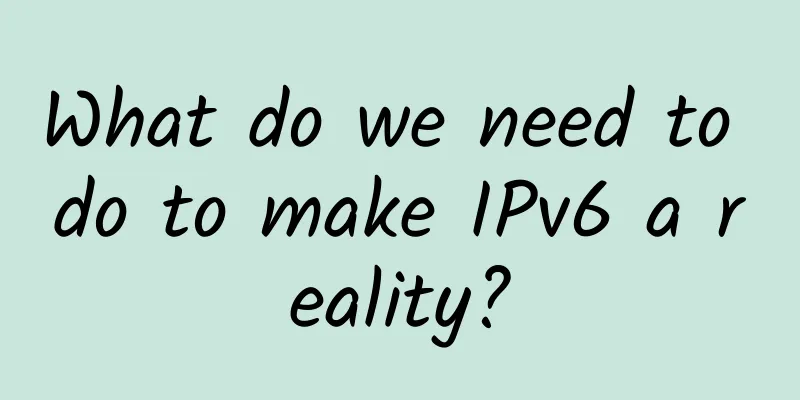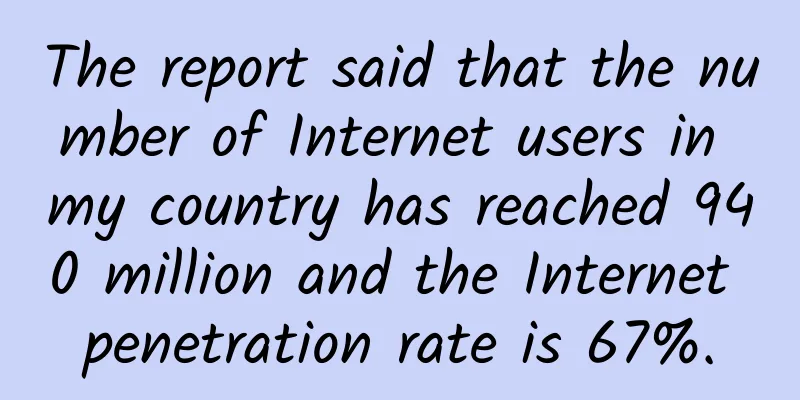Has NB-IoT solved the business model problem that has plagued the Internet of Things for a decade?

|
The business model has always been a key factor that has hindered telecom operators' enthusiasm for the Internet of Things. So since the Internet of Things wave began to rise in 2008, telecom operators have always been on the edge of the Internet of Things for nearly a decade. Apart from providing Internet of Things card channel services and a small amount of channel value-added services, the entire telecom industry has not been able to arouse much interest.
Operators’ Great Leap Forward into the Internet of Things As early as June this year, China Mobile announced that it would deploy NB-IoT networks in 386 cities, and this month announced a large-scale base station procurement campaign with a scale of up to 150,000, covering 31 provinces across the country, and an investment of up to 39.5 billion. China Telecom announced in June that it had built an NB-IoT network covering urban and rural areas. China Unicom started early, but in the actual implementation process, there is still a slight gap between China Telecom and China Mobile in terms of network construction and business development. But in any case, the great leap forward of China's three major operators in the Internet of Things has begun. This great leap forward was initiated under the active promotion of industry management departments and the active lobbying of equipment manufacturers. Of course, it was also the need for the three major operators to develop their own strategies:
The Great Leap Forward is not only reflected in network construction, but also in the continuously lowered transaction prices of IoT tariff products. People all over the country are looking for telecom operators for IoT cards, but they are also comparing prices nationwide. In the field of IoT, the competition among the three major operators has almost become a competition among 1,000 local companies. The territorial operations built up in the 2G era have been completely shattered. Those who need IoT cards can always find the differences in policy operations among different local companies and find their own niche. It can be said that a new out-of-control situation is taking shape. However, the Great Leap Forward and loss of control are not bad things for the entire Internet of Things industry, and I believe that the Great Leap Forward and loss of control are just brief episodes in the process of transformation of telecom operators' local operating model to a unified and centralized large-market operating model. How NB-IoT changes the structure of business models From a technical perspective, NB-IoT provides a new solution for more categories and larger-scale "things" to access the telecom operators' networks. Therefore, the basis of the story about NB-IoT is low cost and low power consumption. Although the current status quo is that the cost of NB-IoT chips and modules is still several times higher than 2G, everyone believes that with the completion of telecom operators' network deployment, it is only a matter of time before NB-IoT chips and modules reach the expected cost structure. So, assuming that the scale of “thing” users really reaches tens of billions as expected, what impact will it have on the business model? The first impact is on the customer relationship of telecom operators. This means that the market served by telecom operators will be dominated by corporate customers, and enterprises will become the main objects that telecom operators need to deal with. Moreover, the scope of industries and the scale of customers served will far exceed the current scope and scale. The second impact is on the core deliverables, that is, the products and capabilities provided to users. Since users are mainly "things", they are not as subjective and adaptive as people, which requires telecom operators to have stronger fault diagnosis, processing and service capabilities when facing "things". Especially as IoT applications are gradually embedded in the production, control, sales, management and other processes of corporate customers, the requirements for service availability will pose a huge challenge to the product capabilities of telecom operators. The third impact is the revenue structure. Although telecom operators currently still use a pipeline-based design approach to their revenue structure, in the long run, computing, data, and connections will be integrated. Pricing for connections will not bring about scalable growth for operators due to cost and competition considerations, and data and computing services will become new sources of revenue. The fourth impact is the cost structure. The cost of services in the cost structure of narrowband IoT will rise significantly. Costs that were not prominent in the previous pipeline services, such as consulting service costs, the cost of expanding industry customers through partners, after-sales costs, and integration service costs, will rise significantly. In addition, changes in the talent cost structure will also be crucial. Talents in consulting, computing, engineering, data analysis, and other fields will become the source of competitive advantages for telecom operators. The fifth impact is that the channel structure will undergo new changes. In the field of narrowband Internet of Things, the platform is undoubtedly the core link of the industry, but it is obvious that this platform will be an industry platform, a customer-built platform, and a third-party public service platform will coexist. A unified platform does not conform to the reality of the business world. Therefore, the channel structure of telecom operators will become dominated by platform providers. This means that the change in the channel structure has turned operators into a B2P2B model. The sixth impact is the change in partners. In response to the changes in channel structure, platform parties have become the main partners of telecom operators. In this process, we have actually seen that telecom operators have begun to integrate platform partner resources. For example, giants such as Siemens, GE, Shugen Interconnect, Aerospace Cloud Network, IBM, and Huawei have become important partners. However, partners from the IT and CT fields mainly provide capabilities for operators and cannot directly bring in customers. They also hope to develop customers with the help of operators' channels. The seventh impact is the change in the definition of core resources. The network is no longer the core resource that determines the differentiation of telecom operators in the NB-IOT field. What can bring differentiation has become service and consulting capabilities. Of course, data resources and platform resources are also sources of differentiation, but I think data resources are more important because the platform is essentially just an extension of pipeline capabilities. Therefore, service-oriented and data will become core resources, as well as sources of profit and barriers. This is the impact of the new IoT technology NB-IoT on the IoT business model. Whether NB-IoT solves the business model problem depends on the operators themselves Of course, this influence is slowly taking place. In some areas changes have already begun, while in others they are still changing slowly. From a long-term perspective, if telecom operators can make adaptive changes in their operating models, organizational structures and talent structures, these changes will be positive and beneficial. However, the challenge lies in the fact that the current organizational structure and localized operating methods have severely hindered the development of the Internet of Things, and to some extent have become disruptive innovations - destroying the thinking, organization, processes, and profit structure formed by the traditional telecommunications business of current telecom operators. The key is that telecom operators are still hoping to put a Western suit on a Ma Jacket. For example, China Telecom has continued the business idea of pipelines in its billing model, charging based on the number of connections, which is reminiscent of the per-message billing method in the SMS era. Another challenge is that operators cannot convince their “things” partners how much value they can bring, so that everyone is just looking for cheaper IoT cards. This is understandable from the perspective of operators, but it is regrettable from a business perspective - this shows that operators have not found new sources of income: the pricing of terminal products is determined by terminal manufacturers, the touchpoints for serving customers are not controlled by operators, data-based service capabilities have not yet been formed, and their own integration and integration capabilities are also insufficient. In other words, although the operators have figured out whether they should build networks and have begun to make great leaps forward, they have not yet convinced themselves, the industry, or the ecosystem in terms of their organizational capabilities, product capabilities, and commercial monetization capabilities. But the good news is that the impact of NB-IoT on IoT business is positive in some aspects. This positive impact will only occur on the basis of the operators' own transformation and subversion. Let's look forward to it. |
<<: How to choose the correct branch jumper for the switch
>>: Kai-Fu Lee: Under what conditions will artificial intelligence surpass humans?
Recommend
Wireless router bridging easy to learn
For some people, the signal of one wireless route...
The three major mobile operators have different approaches in the process of clearing out 2G and 3G networks
The deployment of the three major mobile operator...
From concept to practice, the trend of blockchain is coming
In accordance with the requirements of blockchain...
A look back at five major outages in 2019
Any time a network service outage occurs, it can ...
Finding strength in numbers: Data center agglomeration effect
In the past, data centers were often built in rem...
What are the main reasons why enterprises turn to fiber optic networks?
The invention of fiber optic cables has revolutio...
New in Los Angeles CN2 GIA/Japan SoftBank special price starting from $93 per year
BandwagonHost has launched a SPECIAL 40G KVM PROM...
The report predicts that the 5G chipset market will reach US$22.929 billion in 2026
According to the latest report from Valuates Repo...
Huawei Cloud releases blockchain white paper to accelerate the implementation of blockchain technology in the industry
On April 17, during the 2018 Huawei Analyst Confe...
Mao Qian: Gigabit broadband has a long way to go, and 10G broadband is about to emerge
At the "Gigabit Optical Access Technology De...
The United States lost 5G simply because it made the wrong choice at the beginning
In 2019, Ren Zhengfei said that the United States...
Average tariffs to drop by another 10%. Senior management has given operators another task target! Are you ready?
At this year's two sessions, the top leadersh...
Research shows: 80% of enterprises will strengthen 5G and edge plans
Edge and 5G have become leading areas of investme...
What is the difference between 5G bearer network?
Hello everyone, I am Xiaozaojun. In today’s artic...









